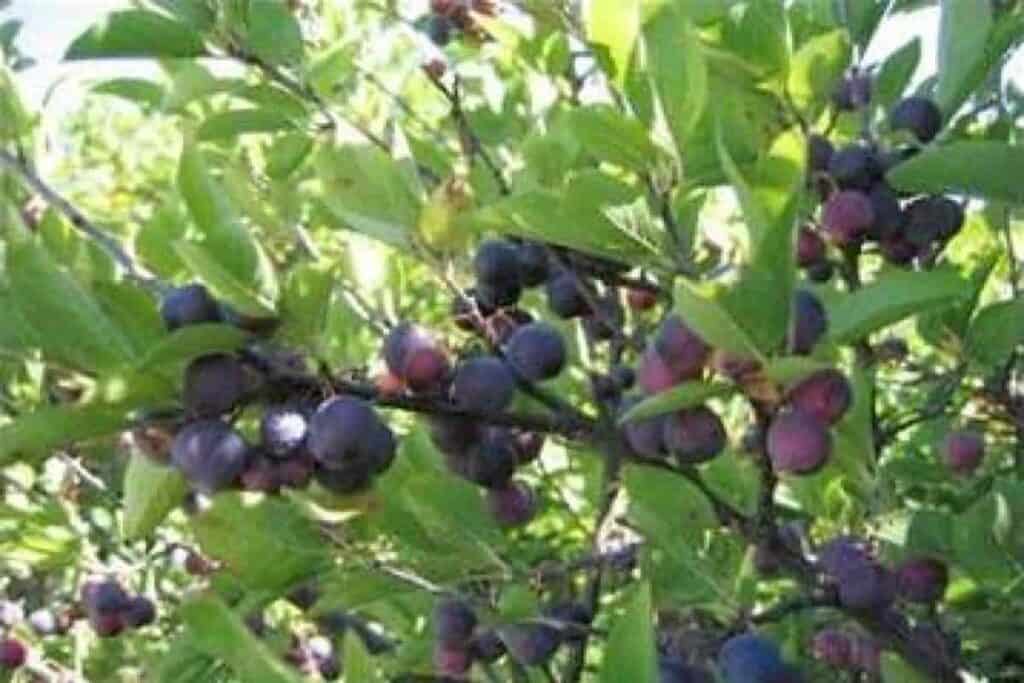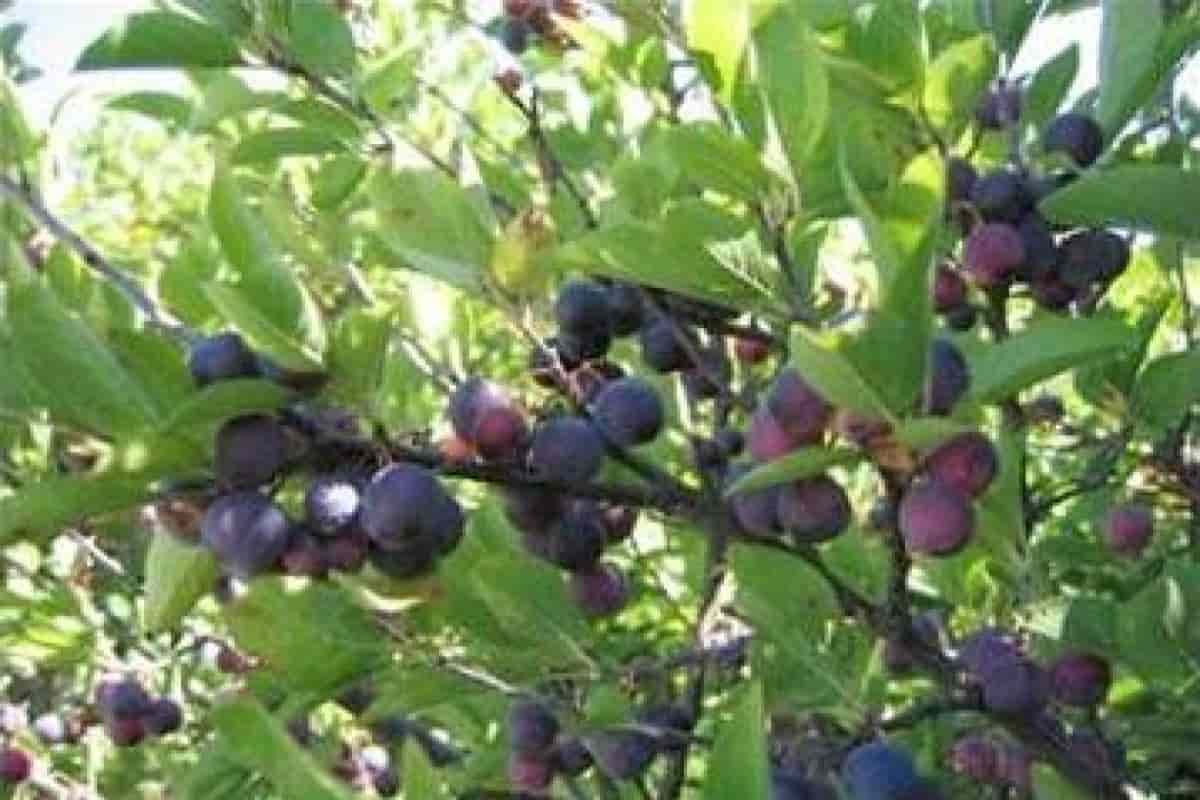The wild beach plum deserves much more attention than it is now given.
Prunus Maritima, in scientific terminology, is a three to 6’ foot-high bush, thin and limping when young, thick, and spreading when mature.

In places, the bushes occur in extensive patches which may cover several hundred square feet.
It is native along the Atlantic coast from southern Maine through Virginia. Within its range, it grows most commonly on the strip of older, better-stabilized dunes.
Occasionally, it is found growing naturally on inland dunes and sandy patches several miles from the coast.
Beach Plum Characteristics
In May, before the leaves are out, the plants are covered with a profusion of attractive, small white blossoms.
The medium dark green, shiny, elliptical leaves soon follow. The deep scarlet to purple fruit ripens in late Summer and can be picked over about a month.
A ½” inch to an inch in diameter, they are borne regularly year after year in great abundance.
The fruits differ from one bush to another in size, shape, color, and taste. Many strains offer good opportunities for selecting and breeding superior fruit.
Its most characteristic associates are beach grass and bayberry. In some places, individual plum bushes grow so close to high water marks that their only associate is beach grass.
Growth In The Inland Side
On the inland side, the plum’s limit is where marsh grasses, shrubs, and tree growth become thick enough to form a continuous cover. The plum bushes are too intolerant to thrive under conditions of severe competition.
Soil samples taken near beach plum bushes on the Delaware coast were analyzed:
- Acidity – pH 5.2 to 6.0
- Nitrate nitrogen – poor
- Calcium – poor
- Magnesium – fair
- Phosphorus – very poor
- Potash – poor
- Toxic aluminum – low
The coarse, infertile beach sand in which the plant grows is extremely droughty. As a result, much of the water for plant growth comes from a brackish water table several feet below the surface.
The beach plum plant’s heavy fibrous root system successfully extracts water and food from this sterile environment.
Uses Of The Beach Plum Fruit
The principal use made of the fruit is for preservation. Beach plum jams and jellies are delicious. Many coastal residents consider them to be unequaled.
The jam resembles that made from Blue Damson plums. When jellies are made without using pectin, a thick tart syrup is relished on hot cakes and waffles.
Beach plums are palatable raw, and some strains are decidedly savory. However, their natural flavor could doubtlessly be improved by plant selection.
Cultivated Beach Plum In Coastal Plain
They have found that the beach plum will do well under cultivation on the Coastal Plain, where it is native.
Farther inland, on upland soils, it has yet to offer any promise. While germination and survival are good, growth is slow, and the plant does not mature.
The essential facts of beach plum culture appear to be:
1. The plant is native to the Coastal Plain and grows naturally in barren areas of dune sand.
2. Reproduction is easy, either by direct seeding or root cuttings. Germination percent and survival are both high.
3. Plum products, mostly preserves, are commercialized in New England. An excellent opportunity to develop a similar market is present in the Middle Atlantic States.
4. In the New England States, the yields vary greatly from year to year due largely to the weather. A cold, wet Spring greatly reduces the crop.
The author’s observations lead him to believe that such adverse weather is rarely a factor in the Middle Atlantic States. Crop yields appear to be consistently heavy.
44659 by R Trimble
